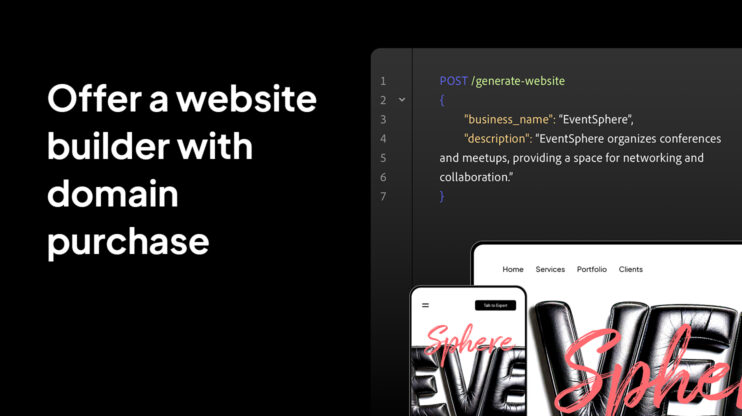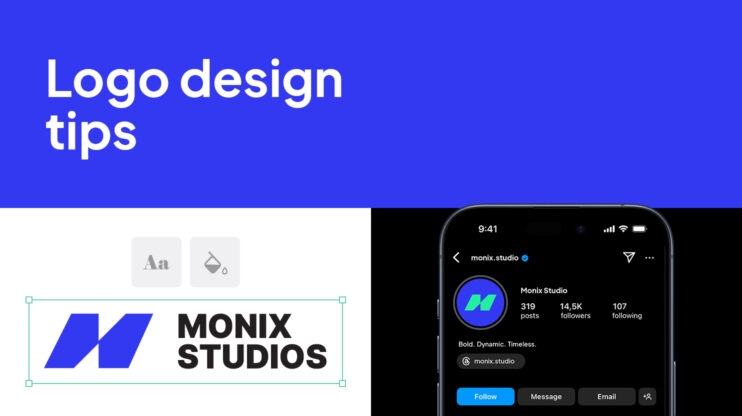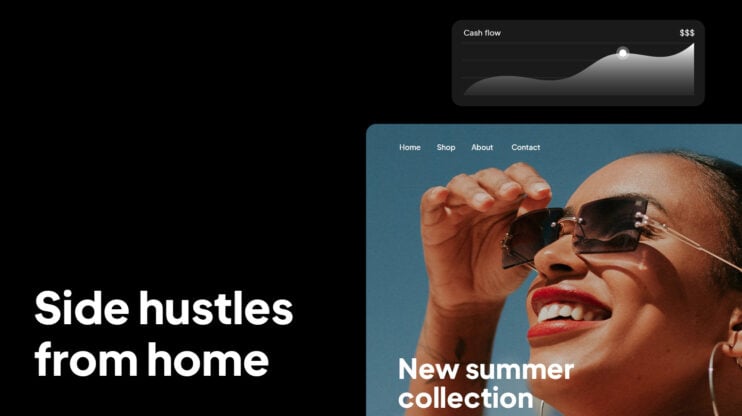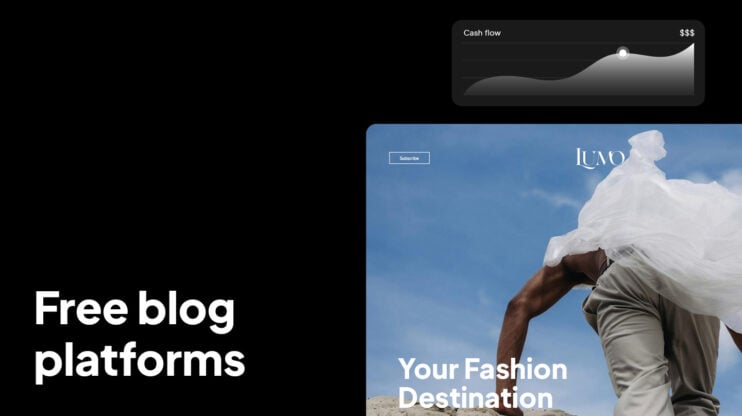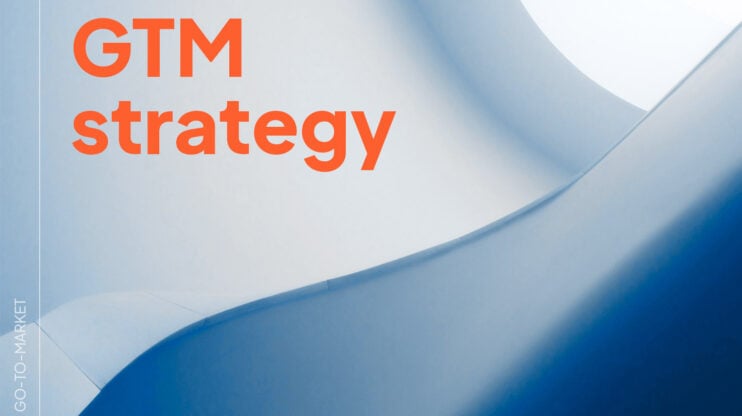Agencies are shifting from one-off client projects to scalable, recurring service models, and white-label website builders are driving that change. Instead of starting from scratch with every client, agencies can now launch, manage, and host websites under their own brand using an all-in-one platform built for scale.
This shift isn’t just about efficiency. It’s about evolution. The agency that once delivered websites now operates like a platform, offering design, hosting, and ongoing maintenance as subscription-based services that generate predictable monthly revenue.
That’s where white-label website builders come in. They give agencies the tools to build faster, deliver consistently, and retain full control over branding and client experience. And as automation and AI become central to web creation, the agencies embracing this model are shaping the future.
In this guide, we’ll explore what a white-label website builder really is, how to evaluate one for your agency, and the strategies that turn it into a growth engine for your business.
What is a white-label website builder for agencies?
A white-label website builder for agencies is a platform that allows you to create, host, and manage client websites entirely under your own brand. Instead of sending clients to a third-party builder, your agency keeps it in-house, complete with a branded dashboard, custom domain, and end-to-end control over the client experience.
The core difference between a white-label builder and a standard SaaS website builder is ownership. Consumer builders like Wix or Squarespace own the product and the client relationship. In a white-label setup, you own both. Clients log in through your platform, receive your communications, and associate every interaction with your brand, not the provider behind it.
Most modern white-label builders include tools for AI website generation, automated hosting, client management, and billing integration. For agencies, this combination removes the technical overhead of development while enabling new revenue streams through maintenance, upgrades, or bundled services.
Choosing the right white-label website builder
Because white-label website builders are still emerging, knowing how to evaluate them can be challenging. On the surface, many platforms promise the same things: speed, scalability, and “your branding.” But under the hood, the differences in flexibility, automation, and ownership can be huge.
To choose the right partner, start by asking the right questions.
- How deep is the white-labeling?
A true white-label platform should go beyond swapping out logos. Ask:
- Can I host it under my own domain?
- Can I control dashboard visuals, login pages, and onboarding flows?
- Are client communications (like invoices and emails) branded as mine?
These details define how “invisible” the underlying provider is to your clients, and how much ownership your brand truly holds.
- How much automation is built in?
Automation determines how scalable your model can become. Ask whether the builder includes AI website generation, auto-optimized hosting, or automated client onboarding. A platform that handles setup and maintenance in the background frees your team to focus on design, strategy, and upsells.
- Does it integrate with my current tools and workflows?
Your CRM, billing system, and project management tools should sync seamlessly. Evaluate whether the provider offers API access, integrations, or native connections for account creation, payments, or client communication. If integration is limited, growth will be too.
- How flexible is the pricing and account structure?
Agencies often need custom plans for different client tiers. Ask:
- Can I define my own pricing or service bundles?
- Is there support for recurring billing or usage-based pricing?
The best builders support multiple account levels and let you grow revenue in ways that match your agency’s business model.
- What kind of support and documentation does the provider offer?
Even the most automated system needs human support behind it. Look for onboarding resources, technical documentation, and responsive partner assistance. This becomes crucial when you start scaling across dozens or hundreds of clients.
- What performance and reliability guarantees are in place?
Since you’ll be hosting client websites on the platform’s infrastructure, uptime and performance directly affect your reputation. Look for guarantees, built-in caching or CDN capabilities, and transparent reporting.
Monetization & growth opportunities
A white-label website builder makes website creation easier and opens new, scalable revenue streams for your agency. The key is knowing how to package those opportunities into services clients value month after month.
- Subscription-based revenue models
Turn websites into ongoing relationships instead of one-time projects. Offer clients a simple monthly or annual plan that includes hosting, maintenance, and an easy-to-use website builder. Predictable income helps stabilize your agency’s cash flow while clients appreciate having one source for website services.
- Tiered service packages
Create pricing tiers that grow with your clients, for example, basic sites, business sites, and premium sites with ecommerce or SEO support. A tiered model keeps entry-level clients accessible while encouraging upsells as their needs evolve.
- Maintenance and retainer services
Offer care plans that include updates, security checks, and performance monitoring. Because white-label builders automate much of the backend, these retainers can be highly profitable with minimal ongoing effort.
- Bundled add-on services
Combine your white-label builder with complementary offerings, digital marketing, analytics, or AI content support, to position your agency as a full-service platform. Bundling increases your average revenue per client while strengthening long-term loyalty.
- Partner and reseller revenue
For larger agencies or SaaS providers, a white-label platform can become a secondary business. You can resell access to other partners or franchise your branded builder to regional teams, expanding reach without additional infrastructure.
When you shift from one-off design projects to a platform-based model, every new client becomes a subscription, and every subscription becomes recurring value. That’s how white-label builders transform agencies into scalable businesses.
Building a branded platform experience
A white-label website builder becomes truly powerful when clients experience it as your platform, not someone else’s technology in disguise. The goal is to create a branded ecosystem where your clients log in, manage their sites, and view your agency as the platform that powers their online business.
That starts with branding control. Your domain, your logo, and your design language define the environment clients interact with. The interface should feel cohesive with your website, proposals, and support communications, reinforcing the sense that everything they do happens within your system.
With solutions like 10Web’s White-Label Website Builder, agencies can customize dashboards, domains, and even client onboarding flows to match their voice and workflow. Some partners use this flexibility to create tiered experiences, where basic users might see a simplified dashboard, while long-term clients access expanded tools for analytics, SEO, or ecommerce.
Beyond visuals, a branded platform experience also changes how clients perceive value. Instead of moving on after you hand off their website, they’re subscribing to your digital ecosystem. This model builds trust, reduces churn, and positions your agency as a long-term technology partner rather than a one-time creative vendor.
Workflow example: From template to live website
When a white-label website builder is set up inside your agency, the process of delivering client sites shifts from manual to methodical. What once required dozens of moving parts, design drafts, development sprints, and hosting hand-offs now happens within a unified, branded environment.
A typical white-labeled workflow starts with a template or AI-generated layout. Your client’s information, industry, and design preferences feed into a starter site that already follows your agency’s quality standards. Because hosting, performance, and SEO basics are handled automatically by the platform, your designers and account managers can stay focused on creative and strategic decisions.
Once approved, publishing is seamless. The site launches under your hosting and domain management, and the client immediately accesses their own login, all within your branded system. This continuity makes the experience feel premium while dramatically reducing project turnaround time.
Platforms like 10Web’s White-Label Website Builder make this flow intuitive, blending AI generation, performance optimization, and branded hosting into one process. The result is a workflow that scales effortlessly. Each new site is a repeatable success, not a reinvented project.
Scaling with automation and client self-service
The real growth in a white-label website builder model comes from what happens after launch. Once your system is in place, automation and client self-service become the engines that let your agency scale without extra hands.
Automation keeps projects moving at scale.
Automated hosting setup, SSL management, backups, and performance optimization eliminate the manual work that used to eat into your margins. Client onboarding can also be automated. When a new project begins, the system collects details, provisions hosting, and spins up a starter site within minutes. Your team steps in only where human creativity adds real value.
Client self-service builds trust while reducing support load.
A well-designed branded dashboard lets clients handle simple updates, text changes, blog posts, and even product uploads without calling your team for every small edit. It keeps them engaged and reinforces the perception that they’re using your platform, not someone else’s software.
Your agency’s role shifts from provider to platform.
As automation handles the repetitive work, your value moves higher up the chain, toward digital strategy, optimization, and growth services. That’s where the most profitable client relationships form.
With platforms like 10Web’s White-Label Website Builder, agencies use automation and client access controls to strike the right balance between efficiency and personalization. The result is a scalable, sustainable model where growth doesn’t depend on adding more staff, it depends on making your system smarter.
How agencies can evolve into platform-based businesses
For modern agencies, a white-label website builder is the foundation of an expanded business model. It replaces one-off client projects with an ecosystem that delivers ongoing value, steady revenue, and a branded client experience that grows stronger with every interaction.
By combining automation, AI, and white-label control, agencies can operate like SaaS platforms, offering clients a comprehensive all-in-one solution that includes creation, hosting, and management. You own the platform, the client experience, and the long-term relationship.
As your system matures, growth becomes predictable. New clients onboard faster, recurring services expand naturally, and your brand becomes the digital home your clients rely on. That’s the evolution from agency to platform, from projects to partnerships.
FAQ
What is a white label website builder for agencies, and how is it different from a consumer SaaS builder?
How does adding a branded builder help us scale and increase MRR?
What revenue models work best for white-label solutions?
What features should agencies prioritize when evaluating a white-label builder?
How does the client experience work under our brand?







